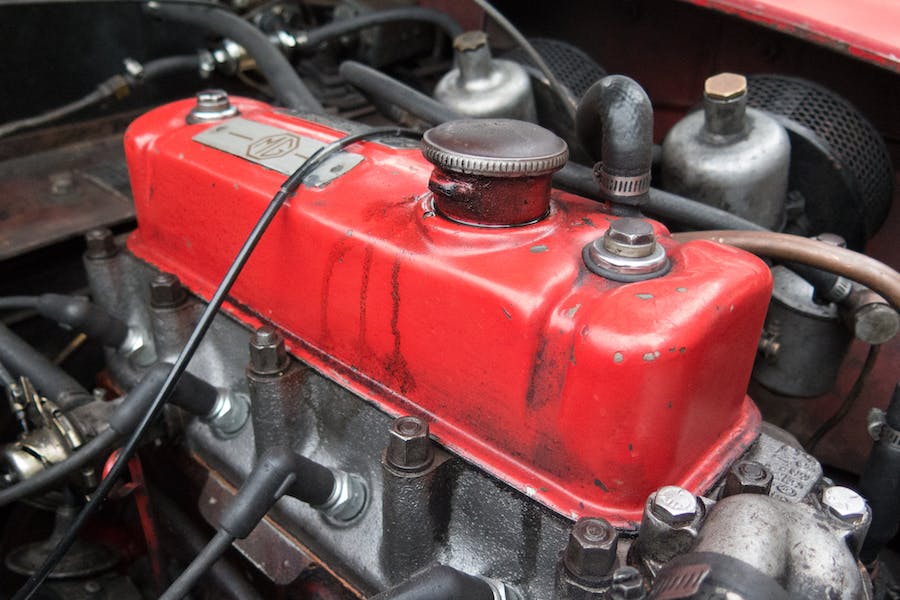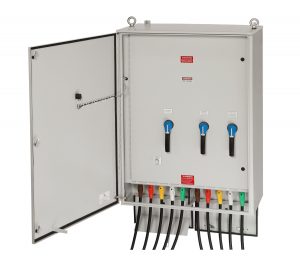
A generator transfer switch safely connects a home’s electrical system to a generator. It switches the electrical load from the utility to the generator during an outage.
Securing your home’s power supply in times of emergency, the generator transfer switch plays a critical role. Transitioning from utility to alternate power sources seamlessly, this switch ensures that when the grid goes down, your essential appliances and devices continue to function without a hitch.
It’s a safety mechanism that prevents dangerous back feeding of power to the grid, which can pose a severe risk to utility workers and your electrical system. Owners of backup generators view transfer switches as essential, given their capacity to permit a swift and secure response to power outages. Their installation is a key step in preparing residential and commercial properties for uninterrupted power regardless of external circumstances.
The Basics Of Transfer Switches
During a power outage, a generator transfer switch acts as a traffic conductor for electricity. Its primary role is to ensure the safe transition of power from the utility to a backup generator, preventing dangerous back-feed.
Functionality Of Transfer Switches
A transfer switch swiftly changes the power source of a home’s electrical circuit. Safety is a top priority as it isolates the generator power from the utility lines. This process safeguards utility workers and equipment.
Types Of Transfer Switches: Manual Vs. Automatic
Two main types of transfer switches exist – manual and automatic. Each type functions differently based on user interaction and automation levels.
| Type | Operation | User Involvement |
|---|---|---|
| Manual Transfer Switch | User operates switch | High |
| Automatic Transfer Switch | Senses outage, switches automatically | Low |
- Manual switches require a person to flip the switch during an outage. They are more affordable but less convenient.
- Automatic switches detect power loss and switch instantly without human action. They offer seamless power continuity but at a higher cost.
Generator Transfer Switch Mechanics
When the power goes out, a generator transfer switch becomes a hero. It helps a generator provide electricity to a home safely. Below, we’ll dive into the transfer switch mechanics.
Key Components And Their Roles
- Transfer switch: Acts as a traffic director for electricity.
- Utility and generator breakers: They control power flow.
- Control board: The brain that decides when to switch sources.
The Switching Process: Step By Step
- Power loss detected: The control board senses no electricity.
- Wait time: A short delay ensures it’s not a brief outage.
- Generator starts: It warms up to provide stable power.
- Transfer switch activates: Safely connects generator power to home.
- Utility power returns: The control board waits, then switches back.
- Generator cools down: Runs a little longer, then shuts off.
Installation Guidelines
A generator transfer switch is a critical component that ensures a safe switch between power sources. Proper installation is key to functionality and safety. The process requires attention to location and wiring. Follow these guidelines to guarantee a safe and efficient setup.
Choosing The Right Location
Locating the transfer switch is step one. Here’s what to consider:
- Accessibility: Easy access for operation.
- Distance: Close to the main service panel.
- Environment: Dry, temperature-controlled area.
- Compliance: Meet all local codes.
Wiring Considerations For Safety
Correct wiring ensures safety and avoids hazards. Take these steps:
- Use Quality Materials: Opt for high-grade cables and connectors.
- Follow Codes: Adhere strictly to electrical codes.
- Secure Connections: Ensure all connections are tight.
- Label Wiring: Mark each wire for easy identification.
- Check for Leaks: Inspect for any exposure or damage.
Professional installation is always recommended. It guarantees safety and efficiency.

Credit: www.psicontrolsolutions.com
Operating A Generator Transfer Switch
When power outages strike, a generator transfer switch becomes essential. It safely connects a generator to your home’s electrical circuits. Let’s explore how to operate one effectively. With the right steps, ensuring your power stays on becomes a simple task.
Manual Transfer Operation
Manual Transfer Operation
Manual transfer switches require human action. Follow these steps:
- Locate your transfer switch.
- Turn off all circuit breakers in the transfer switch.
- Start your generator and let it warm up.
- Switch the main breakers from utility to generator power.
- Turn on home circuits one by one to manage the load.
Remember to never overload the generator. Only select the circuits you need most.
Understanding Automatic Operations
Understanding Automatic Operations
Automatic transfer switches offer convenience. They work without your input:
- They monitor utility power continuously.
- During an outage, they automatically start the generator.
- The switch transfers power after detecting generator stability.
- Once utility power returns, they switch back and turn off the generator.
This seamless process makes sure that your power remains uninterrupted during outages.
Maintenance Practices
Maintenance Practices are vital for the longevity and reliability of a generator transfer switch. Regular upkeep ensures safe operations during power outages. Below are essential routine practices and troubleshooting tips for keeping the system in top condition.
Routine Check-ups
Regular inspections can prevent unexpected failures. A set schedule for examining your transfer switch is crucial. Key components to check include:
- Connection Points: Tighten any loose connections.
- Switch Mechanism: Ensure it moves smoothly without obstruction.
- Wiring: Look for signs of wear or damage.
- Batteries: Check charge levels and replace if necessary.
Documenting each inspection helps track the switch’s condition over time.
Troubleshooting Common Issues
Recognizing and addressing problems early can avert major malfunctions. Some common issues include:
| Issue | Solution |
|---|---|
| Switch Doesn’t Activate | Check power sources and correct any detected faults. |
| Noisy Operation | Inspect internal components for obstructions or damage. |
| Erratic Switching | Test control circuits and replace faulty elements. |
| Indicator Lights Not Working | Ensure bulbs are functional and replace if needed. |
If issues persist, consult a professional technician. Early interventions prevent large-scale disruptions.
Regulatory And Safety Concerns
Understanding the regulatory and safety concerns is crucial when dealing with generator transfer switches. These concerns ensure the safe and legal operation of transfer switches during power outages.
Complying With National And Local Codes
Generator transfer switches must meet specific codes. These codes guard against electrical mishaps. They differ across regions. Always check local regulations. This guarantees code compliance. Professionals should install switches to avoid costly penalties or hazards. National codes, like the National Electrical Code (NEC), set the standard for safe electrical design, installation, and inspection.
- Permits: Secure necessary permits before installation.
- Professional Installation: Hire a certified electrician.
- Inspections: Have the system reviewed by an authority.
Safety Measures To Prevent Accidents
Safety is paramount with transfer switches. They handle high voltages. Without proper safety, risk of fire or electrocution increases. A series of measures can help prevent accidents:
- Clear Labeling: Label all switch positions and connections.
- Regular Maintenance: Check and service your switch regularly.
- Proper Use: Operate the switch as instructed in the manual.
| Check Item | Description | Frequency |
|---|---|---|
| Inspection | Visual check for damage or wear | Monthly |
| Testing | Functional test of the switch | Every 6 months |
| Cleaning | Remove dust and debris | Annually |
Frequently Asked Questions For How Does A Generator Transfer Switch Work
Do I Need To Turn Off Main Breaker When Running Generator On A Transfer Switch?
Yes, you need to turn off the main breaker when using a generator with a transfer switch to prevent backfeeding the grid, ensuring safety.
How Does A Transfer Switch Work For A Portable Generator?
A transfer switch for a portable generator safely connects the generator to your home’s electrical circuits. It automatically switches the power source from the utility to the generator during an outage, ensuring critical systems keep running without manual intervention.
What Happens To Transfer Switch When Power Comes Back On?
Once power returns, the transfer switch automatically reverts the electrical load back to the main power source, resuming normal operations. This ensures a seamless transition from generator to utility power.
Can You Run A Generator Without A Transfer Switch?
Yes, you can run a generator without a transfer switch by connecting appliances directly or using extension cords. It’s not recommended for whole-house connections due to safety risks. Always follow manufacturer guidelines and local electrical codes.
Conclusion
Understanding the mechanics of a generator transfer switch is crucial for safe, efficient energy management. This key component ensures reliable power flow during outages, seamlessly shifting to backup circuits. Proper installation and maintenance secure your peace of mind, keeping your essentials running smoothly in any situation.
ACKNOWLEDGE the vitality of a dependable transfer switch in your power backup plan.




















